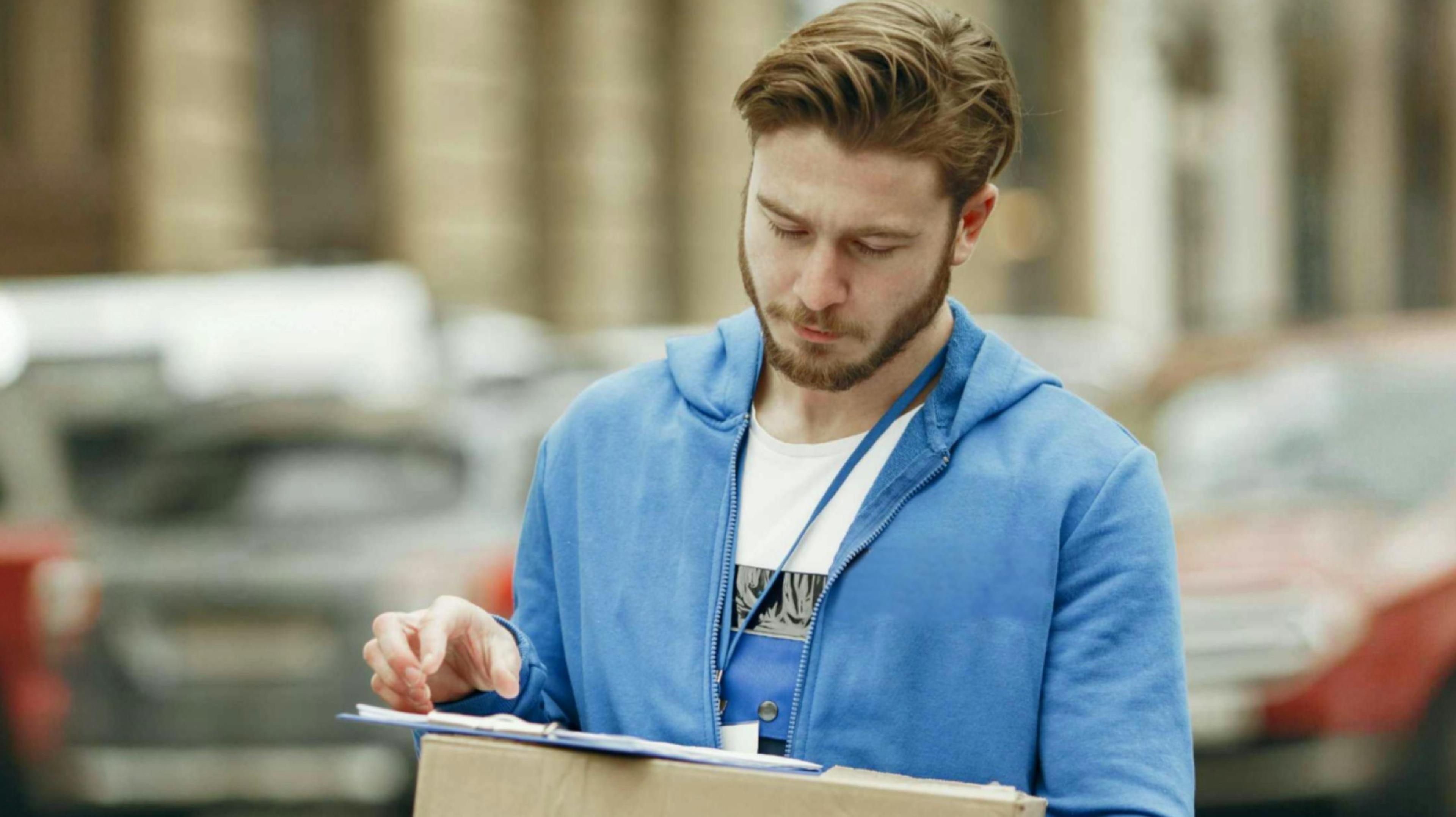ETA, ETD, ATD, and ATA in Shipping Simply Explained

A basic understanding of shipping terms can make your job as a dispatch manager easier. Another hack to simplify your workday? Circuit for Teams routing software.
Wondering what ETA vs ETD is?
The shipping industry is booming as more and more people order products online — sending them directly to their doorsteps.
However, those packages need to go through several stages of processing and transit before making it to their new homes.
Planes, trains, boats, vehicles, and even bicycles can be part of a single package’s journey! And tracking all those stages can be complex.
The good news is that you can simplify your job in delivery management by mastering some basic shipping terms, like ETA, ETD, ATD, and ATA.
Say what? Don’t worry; we’ll explain what they all mean!
While these terms originated in the maritime shipping industry, you can also apply them to last-mile delivery. Using these terms can help you more easily categorize, track, and prioritize deliveries.
This article introduces some essential shipping terms you should know as a dispatch manager. In addition to a quick definition for each term, we’ll give you a concrete example so you can see how it applies in the real world.
Let’s dive in.
What is ETA (estimated time of arrival)?

Estimated time of arrival refers to when you expect a driver to arrive at a customer’s building.
When placed side by side with the estimated time of departure, the ETA allows you to calculate the expected duration of a driver’s stop.
ETA can also be useful for customers, giving them a set time to expect their package.
It’s also handy for you and your drivers — making sure you stay on track with your delivery time objectives.
ETA vs ETD: An example of ETA
Let’s say a driver has three packages to deliver (OK, it’s not the most realistic example — we know most delivery drivers have way more stops in a day — but bear with us).
One has an ETA of 10 a.m., the second has an ETA of 2 p.m., and the third has an ETA of 4 p.m.
Each package contains valuable goods and needs a customer signature on delivery. The customers will know exactly when to expect their packages and make sure they’re there to sign for them.
Meanwhile, if you’re the delivery manager, you can compare the ETA with the actual time of arrival to see if your drivers are staying on track.
If not, it’s either time to figure out what’s holding up your drivers or update your ETA calculations.
What is ETD (estimated time of departure or estimated time of delivery)?
Estimated time of departure refers to when you expect a delivery shipment to leave the warehouse or storage facility to start its route.
With the help of a route planning tool like Circuit for Teams, the ETD can help you calculate delivery time windows and estimated time of arrival.
For example, let’s say a driver leaves the storage facility on time at 9 a.m. (the estimated time of departure).
According to their routing software, the first stop on their route is 30 minutes away — so the ETA is 9:30. To account for possible delays, like traffic jams, the driver might set a delivery time window of 9:30 to 9:45 a.m. for the customer.
However, ETD can have another meaning: estimated time of delivery.
We know, it’s confusing!
In thiscase, ETD refers to the anticipated time when the driver can complete last-mile delivery and hand over a package to the final recipient, consignee, or customer.
However, note that the estimated time of delivery isn’t necessarily identical to the estimated time of arrival.
For example, if a delivery truck arrives at a building at 10 a.m. but has multiple deliveries to make in that same building, their ETA could be 10 a.m., while their ETD could be 10:08 a.m.
ETA vs ETD: An example of ETD
Let’s say you expect a delivery truck to leave the warehouse or storage facility at 12 p.m. That’s the estimated time of departure.
As the dispatch manager, you can use courier software to estimate that it will take the driver 15 minutes to get to their first drop-off point.
So, if the estimated time of departure is noon, you could schedule the estimated time of arrival at 12:15.
Here’s an example for the estimated time of delivery: A courier service is transporting legal documents from a law firm to a client for signing.
There’s deadline pressure due to the nature of the documents.
The client knows the estimated time of delivery is 2 p.m., so they can make sure they’re available at that time to receive the documents, sign them promptly, and then send them back.
ETA vs. ETD: Key differences to understand

It’s critical to differentiate between ETA and ETD — you don’t want to mix these terms because they can mess up the entire dispatch management process!
Again, ETA refers to the estimated time of arrival, while ETD can refer to the estimated time of departure or the estimated time of delivery.
When might you use which term?
ETA can be useful for customers, giving them a delivery time window and a rough idea of when they can expect their package.
Estimated time of departure is more useful for delivery drivers and dispatchers. For example, if there’s a particular time that drivers should start their route to hit all their stops within their shift, specifying the estimated time of departure is handy.
Similarly, an estimated time of delivery can be helpful for time-sensitive packages. For instance, let’s say a driver needs to get a package to a customer by 2 p.m.
Getting up-to-date stats on their route that includes a set ETD based on their delivery route helps make sure that they meet the deadline.
What is ATD (actual time of departure)?
The actual time of departure refers to when a driver leaves the warehouse or shipping facility with their vehicle.
This data can help give transparency surrounding supply chain logistics.
The ATD is often different from the estimated time of departure.
Ideally, though, the two times will be the same, but delays can happen, so the ATD might be later.
This data helps show whether a vehicle is on schedule, keeping supply chain logistics on track.
ETA vs ETD: An example of ATD
Let’s say you expect a driver to leave the warehouse or storage facility at 11:30 a.m. — this is the estimated time of departure.
However, there’s a delay loading packages into the truck, and the driver actually leaves at 11:37 a.m. This is the actual time of departure.
What is ATA (actual time of arrival)?
The actual time of arrival refers to the time when a delivery vehicle arrives at a delivery point. This is different from the ETA, as real-world factors like traffic can affect the ATA.
It’s important to have an ETA and an ATA for every delivery vehicle. While an ETA is useful for planning logistics, it isn’t always reliable or accurate.
Long-term tracking of ATA can help identify potential bottlenecks in the supply chain and even forecast ETAs in last-mile delivery more accurately.
For example, if one driver’s ATA is consistently lagging behind the ETA, you can try to figure out why (or update your data for more accurate ETAs in the future).
ETA vs ETD: An example of an ATA
Let’s say a driver is supposed to arrive at their final destination at 3 p.m. This is the ETA.
However, due to a traffic jam, the truck is delayed. It ends up arriving at the final destination at 5 p.m. This is the ATA.
Discover how Circuit for Teams routing software can improve your business
Terms like ETA, ETD, ATA, and ATD may have started in the shipping industry when shipping companies used them to help avoid port congestion.
But these terms are still relevant and useful in modern ground logistics.
For example, by designating ETAs for each package, you can set expectations for drivers and give valuable information to customers.
Of course, mastering a few acronyms alone isn’t always enough for logistics management.
Circuit for Teams routing software can improve both operations and the customer experience by planning the fastest possible deliveries.
Live tracking allows logistics companies like yours to get updated expected times for each delivery — information that you can communicate to customers for full transparency.
Additionally, drivers can access their route data through a user-friendly mobile app, taking the guesswork out of their delivery day.
The mobile app also makes it easy for drivers and delivery companies to stay in touch — as a manager, you can see where drivers are and when, reducing the need for extra calls or texts.
Ready to give Circuit for Teams a try? Get your free trial today.





